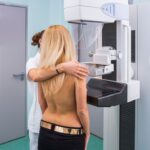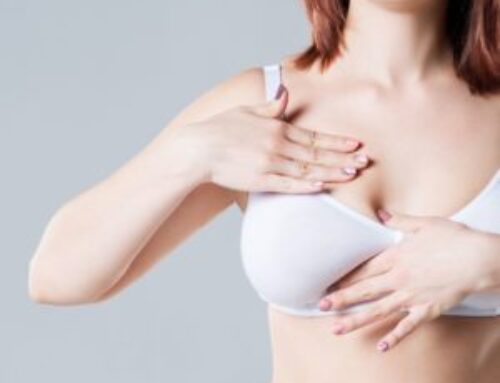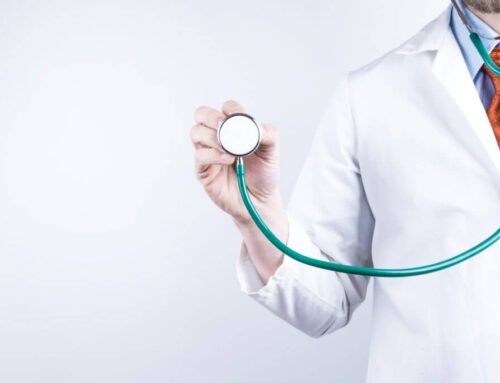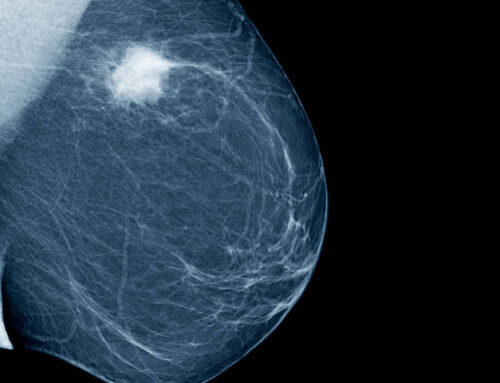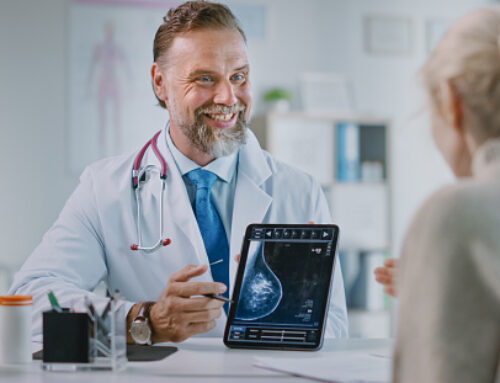Overview
Fibrocystic breasts are composed of tissue that feels lumpy or ropelike in texture. Doctors call this nodular or glandular breast tissue.
It’s not at all uncommon to have fibrocystic breasts or experience fibrocystic breast changes. In fact, medical professionals have stopped using the term “fibrocystic breast disease” and now simply refer to “fibrocystic breasts” or “fibrocystic breast changes” because having fibrocystic breasts isn’t a disease. Breast changes that fluctuate with the menstrual cycle and have a ropelike texture are considered normal.
Fibrocystic breast changes don’t always cause symptoms. Some people experience breast pain, tenderness and lumpiness — especially in the upper, outer area of the breasts. Breast symptoms tend to be most bothersome just before menstruation and get better afterward. Simple self-care measures can usually relieve discomfort associated with fibrocystic breasts.
 Lumps in the breasts are typically believed to be a cause for great concern, although studies indicate that approximately 60 percent of women have them. In some cases, lumps are concerning, but not always. Here, we discuss the term “fibrocystic breast changes” and what it may mean for women with lumpy or ropy breast tissue.
Lumps in the breasts are typically believed to be a cause for great concern, although studies indicate that approximately 60 percent of women have them. In some cases, lumps are concerning, but not always. Here, we discuss the term “fibrocystic breast changes” and what it may mean for women with lumpy or ropy breast tissue.
FIbrocystic breasts are described as having a particular texture. The lumps that are common with this condition are not tumors or abnormal cells. They are cysts that are formed with groups of common cells. Cysts may contain air, fluid, or tiny pieces of tissue. They are more like bubbles than the solid masses that form tumors. They also do not form in the same way that tumors do. Tumors grow from a genetic mutation that alters the reproduction of cells. Cysts may form for several reasons.
The Formation of Fibrocystic Tissue
Different types of cysts form as a result of specific processes. Often, cysts form near milk-producing glands. The reason may be because these glands produce and secrete fluid, so may trap dead cells, leading to a blockage. When the gland cannot properly drain, fluid and cells form into a cyst. At first, most breast cysts are teeny tiny. They grow over time, sometimes over many years. The primary factors in their growth are the hormones estrogen and progesterone. Not only can these hormones trigger cyst formation, but once the cyst forms, even more hormones are released. This cycle increases the risk of multiple cysts growing. The good news about this cycle is that women who have gone through menopause tend to notice that their breast cysts disappear.
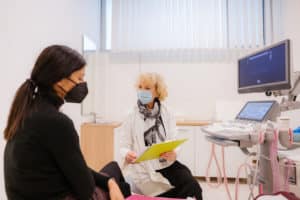
Managing Fibrocystic Breasts
Women with unexamined breast lumps should schedule a visit with their primary care physician or gynecologist sooner rather than later. Just because breast lumps could indicate a benign condition doesn’t mean they always do. A thorough breast examination and breast imaging are warranted in cases of new breast growths or breast changes. Women diagnosed with fibrocystic breasts may be treated with hormonal birth control or other hormone therapy. In some cases, if a cyst is very painful, the doctor may drain it. Surgery is not needed to remove benign breast cysts.
Causes
Fibrocystic breast changesoccur when thickening of breast tissue (fibrosis) and fluid-filled cystsdevelop in one or both breasts. It is thought that hormones made in the ovariesduring menstruation can trigger these breast changes. This may make yourbreasts feel swollen, lumpy, or painful before or during your period eachmonth.
More than half of womenhave this condition at some time during their life. It is most common betweenthe ages of 30 and 50. It is rare in women after menopause unless they aretaking estrogen. Fibrocystic breast changes do not change your risk for breastcancer.
Symptoms
Signs and symptoms of fibrocystic breasts may include:
- Breast lumps or areas of thickening that tend to blend into the surrounding breast tissue
- Generalized breast pain or tenderness or discomfort that involves the upper outer part of the breast
- Breast nodules or lumpy tissue change in size with the menstrual cycle
- Green or dark brown nonbloody nipple discharge that tends to leak without pressure or squeezing
- Breast changes that are similar in both breasts
- Monthly increase in breast pain or lumpiness from midcycle (ovulation) to just before your period and then gets better once your period starts
Fibrocystic breast changes occur most often between 30 and 50 years of age. These changes happen rarely after menopause unless you’re taking hormone replacement medicine such as estrogen or progesterone.
When to see a doctor
Most fibrocystic breast changes are normal. However, make an appointment with your doctor if:
- You find a new or persistent breast lump or area of prominent thickening or firmness of the breast tissue
- You have specific areas of continuous or worsening breast pain
- Breast changes persist after your period
- Your doctor evaluated a breast lump but now it seems to be bigger or otherwise changed
Exams and Tests
Your health care provider will examine you. This will include a breast exam. Tell your provider if you have noticed any breast changes.
If you are over 40, ask your provider how often you should have a mammogram to screen for breast cancer. For women under 35, a breast ultrasound may be used to look more closely at breast tissue. You may need further tests if a lump was found during a breast exam or your mammogram result was abnormal.
If the lump appears to be a cyst, your provider may aspirate the lump with a needle, which confirms the lump was a cyst and sometimes may improve the symptoms. For other types of lumps, another mammogram and breast ultrasound may be done. If these exams are normal but your provider still has concerns about a lump, a biopsy may be performed.

